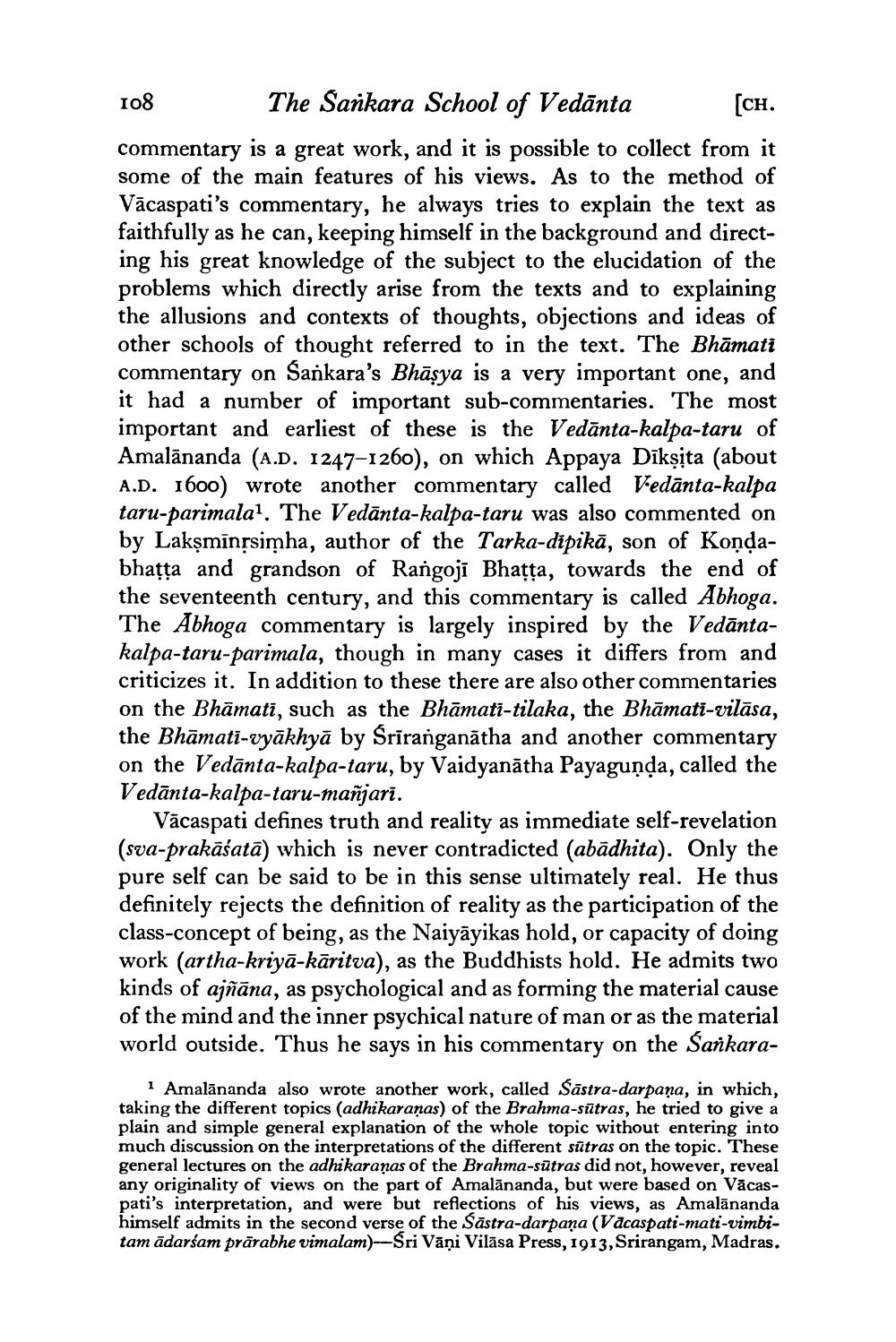________________
The Sankara School of Vedanta
[CH.
commentary is a great work, and it is possible to collect from it some of the main features of his views. As to the method of Vācaspati's commentary, he always tries to explain the text as faithfully as he can, keeping himself in the background and directing his great knowledge of the subject to the elucidation of the problems which directly arise from the texts and to explaining the allusions and contexts of thoughts, objections and ideas of other schools of thought referred to in the text. The Bhāmati commentary on Sankara's Bhāṣya is a very important one, and it had a number of important sub-commentaries. The most important and earliest of these is the Vedanta-kalpa-taru of Amalānanda (A.D. 1247–1260), on which Appaya Dīkṣita (about A.D. 1600) wrote another commentary called Vedanta-kalpa taru-parimala1. The Vedanta-kalpa-taru was also commented on by Laksminṛsimha, author of the Tarka-dipikā, son of Kondabhatta and grandson of Rangoji Bhaṭṭa, towards the end of the seventeenth century, and this commentary is called Abhoga. The Abhoga commentary is largely inspired by the Vedāntakalpa-taru-parimala, though in many cases it differs from and criticizes it. In addition to these there are also other commentaries on the Bhāmati, such as the Bhamati-tilaka, the Bhāmati-vilāsa, the Bhāmati-vyākhyā by Śrīranganātha and another commentary on the Vedanta-kalpa-taru, by Vaidyanatha Payagunda, called the Vedanta-kalpa-taru-mañjarī.
108
Vācaspati defines truth and reality as immediate self-revelation (sva-prakāśata) which is never contradicted (abadhita). Only the pure self can be said to be in this sense ultimately real. He thus definitely rejects the definition of reality as the participation of the class-concept of being, as the Naiyayikas hold, or capacity of doing work (artha-kriyā-kāritva), as the Buddhists hold. He admits two kinds of ajñāna, as psychological and as forming the material cause of the mind and the inner psychical nature of man or as the material world outside. Thus he says in his commentary on the Sankara
1 Amalānanda also wrote another work, called Sastra-darpaṇa, in which, taking the different topics (adhikaranas) of the Brahma-sutras, he tried to give a plain and simple general explanation of the whole topic without entering into much discussion on the interpretations of the different sutras on the topic. These general lectures on the adhikaranas of the Brahma-sutras did not, however, reveal any originality of views on the part of Amalananda, but were based on Vacaspati's interpretation, and were but reflections of his views, as Amalānanda himself admits in the second verse of the Sastra-darpana (Vacaspati-mati-vimbitam ādarśam prārabhe vimalam)-Sri Vāņi Vilasa Press, 1913, Srirangam, Madras.




